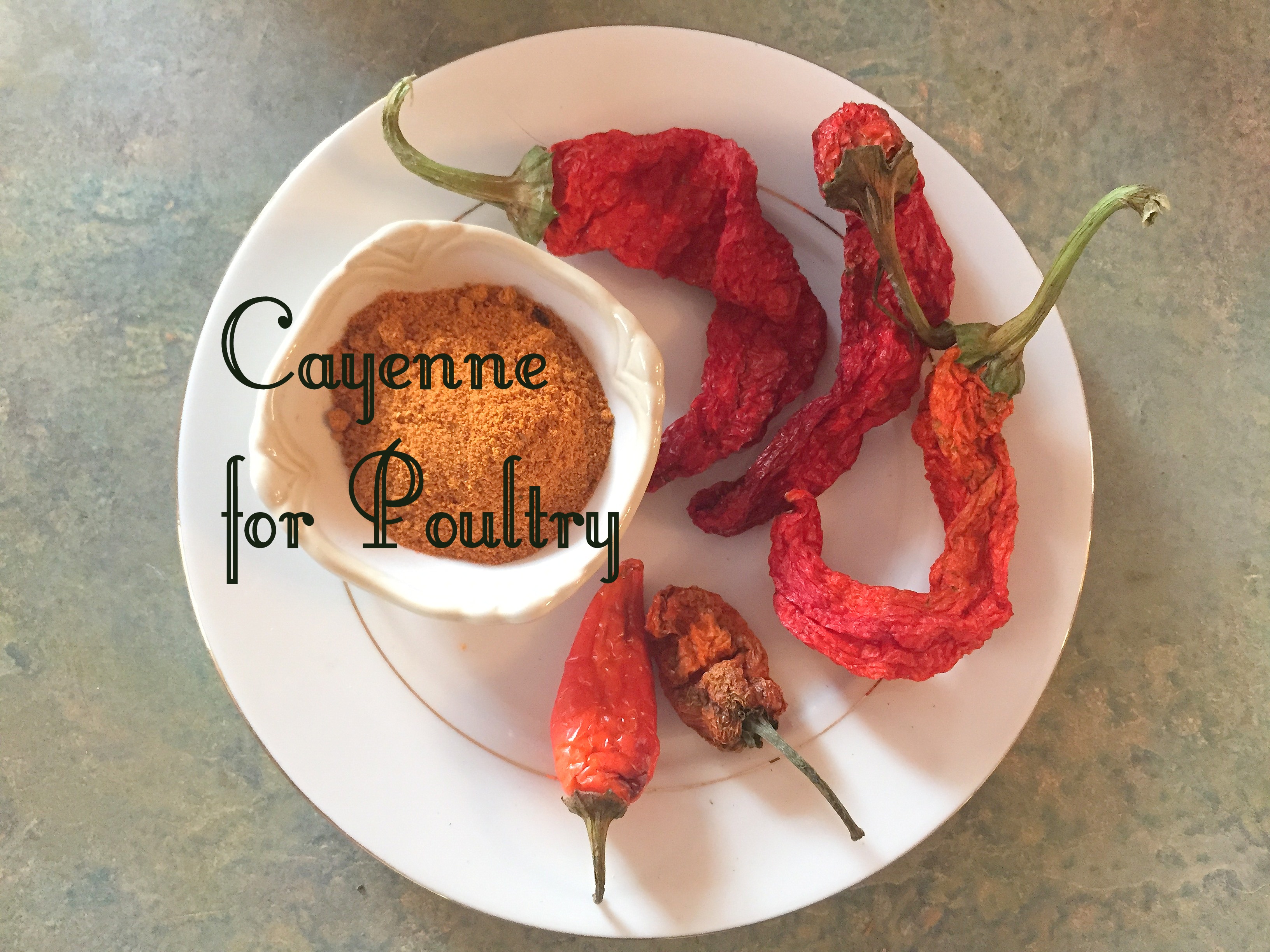
Properties: Analgesic (anodyne), carminative, counterirritant, diaphoretic, hemostatic, circulatory stimulant, and styptic.
Energetics: Warming and drying
It is a bit of surprise to learn how much birds can tolerate the spiciness of cayenne, unlike humans. Some think it has to do with the vast
difference in the number of taste buds. But even then, you would think they would feel something. Cayenne possesses the pseudoalkaloid capsaicin, which binds with pain
receptors which gives the sensation like a chemical burn in mucous membranes including around the eyes and mouth. Now, scientists are concluding that birds are lacking these pain receptors in the mucous membranes altogether. The amount of capsaicin varies between species and varieties, and it is more
so located in the lining of the seed rather than the fruit skin. If you want less capsaicin, use the fruit rather than the seed.
Cayenne on the energetic scale, is both extremely dry and hot and historically is used in small amounts. It is something you build up a tolerance to. For birds, since they do not register the burning sensation that
stops people and other mammals from eating too much, even greater care needs to be taken. Therefore I think free choice and sprinkled on food is not a good idea. Cayenne is also
not particularly water soluble, so putting it in the water is not going to be that effective either. What I advise, and is typically also done with humans, is to use it
in formula to prevent extreme digestive distress and upset and painful elimination if too much is consumed.
Caynee is a stimulant, which in the herbal world increases energy output of the cardiovascular and circulatory system, mucous membranes and digestion. For birds, the most benefit would be stimulating
digestion and the circulatory system. Both of these internal actions will generate internal heat due to burning of food fuel faster and better. To aid the circulatory system, this will
push blood out to the extremities where frostbite is a concern to roosters with their fleshy combs and large wattles. Frostbite of the feet more occurs with prolonged exposure to
frozen and icy ground. But increased circulation to the feet will still help.
Cayenne is also effective to stop bleeding and as a pain reliever. Capsicum depletes substance P and thereby partially blocks pain receptors. While cayenne stimulates the circulatory system,
it also helps equalize blood pressure. When a cut or wound deflates that pressure, cayenne slows the blood out of the wound allowing it to clot faster to stop the blood flow. It also has
antimicrobial properties that can help prevent infections.
Here are some useful ways to use cayenne in formula effectively for our poultry.
Source:
Fueling Our Poultry's Energy Backyard Poultry Magazine October/November 2010. Author Susan Burek
Herbal Learning.com - Cayenne Stops Bleeding, Author by Jerem, August 4, 2010
The Chicken Health Handbook, Author Gail Damerow, 1994.

